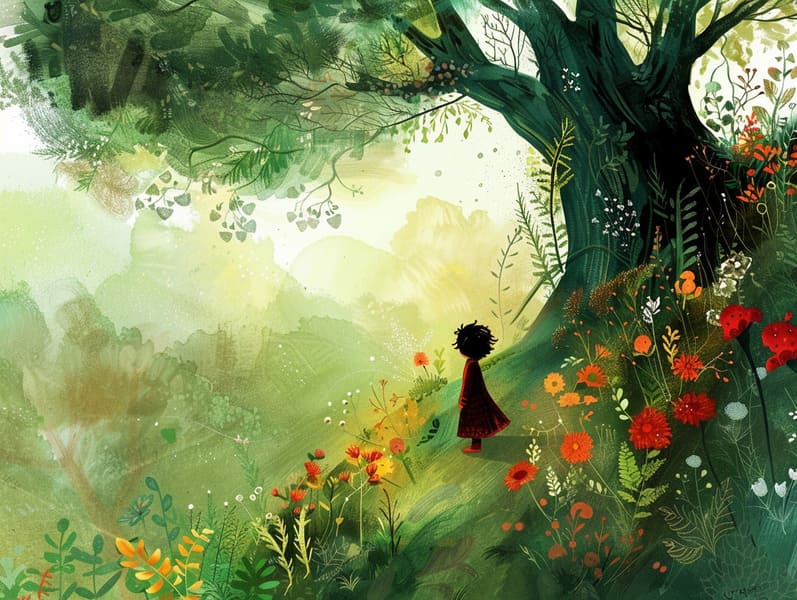
Timeless fairy tales have enduring presence. These stories have been recounted from one generation to the next well before they were ever published. They originated from a variety of traditions, including American traditions. They were initially shared among adults, often carrying themes and messages reflective of the societal norms and beliefs of the time.
The Grimm brothers, Jacob and Wilhelm (the Grimm brothers), were among the first to compile many of these beloved stories. Their published works, "Grimm's Fairy Tales," included classics like "The Little Glass Slipper," "Little Brother and Little Sister," and "Snow White," which have since become cornerstones in the world of children's fairy tales. Similarly, the Danish author's magical stories, such as "The Mermaid's Tale," and "The Duckling that Could," have enchanted hearts worldwide, ensuring their place in the pantheon of famous fairy tales.
Despite being ancient, these stories remain as meaningful as ever, especially as bedtime stories for kids. These charming stories are now available in numerous formats, including vibrantly illustrated books, whimsical animations, and internet fairy tales.
Their lasting appeal can be connected to several magical reasons:
Important Morals: Traditional fairy tales often illustrate important moral lessons. Fairy tales like "The Shepherd Boy and the Wolf" teach the merit of integrity, while "The Hare and the Tortoise" underline the benefits of persistence and unassuming nature. These narratives offer kids clear distinctions between good and bad, shaping their moral compass in a soft yet meaningful way.
Empathy and Understanding: Old fairy tales frequently showcase beings facing trials and tribulations, inspiring readers to empathize with their struggles and root for their triumphs. For instance, "Beauty and the Beast" teaches us the virtue of appreciating inner worth to appreciate the real person of a individual, developing understanding and appreciation.
Cultural Knowledge: Many old fairy tales are rooted in the cultural contexts from which they emerged. Discovering these tales can provide informative snapshots into different traditions, promoting a sense of global awareness and appreciation.
Inventiveness and Fantasy: The magical elements in traditional fairy tales—wizardry and magic—kindle children’s imaginative ideas. These fairy tales carry readers to otherworldly realms, motivating creative ideas and a sense of awe that stays a lifetime.
Classic fairy tales are not only delightful but also teaching. They serve as mesmerizing tools in fostering various cognitive and emotional skills in young ones. When fairy tales are voiced, they foster language development by bringing new word meanings and sophisticated sentence structures. This practice also boosts auditory perception and mindfulness, as young ones remain attentive, looking forward to see what happens next.
Furthermore, deliberating the themes and characters of classic fairy tales can enhance critical thinking and cognitive skills. The young are taught to discern patterns, expect results, and catch on to cause and effect. These analyses also facilitate little ones articulate their thoughts and feelings, fostering their emotional intelligence.
In today’s technological age, the accessibility of digital fairy tales has made these tales more accessible than ever. Websites and online apps make available comprehensive collections of popular fairy tales that can be seen or listened via anytime, anywhere. Fairy tales told out loud are particularly popular, presenting an enjoyable way for kids to delight in these delightful tales. Read-aloud books and read-to-me stories bring characters and settings to life, often supplemented by entrancing music and music that heighten the narrative journey.
The unending appeal of timeless fairy tales lies in their ability to change to today's world while continuing with their central values. Contemporary revisions of these tales often feature more varied protagonists and modern settings, making them relevant to today’s audience. However, the key lessons of guts, warmth, and justness remain unchanged, continuing to move audiences of all ages.
Ancient fairy tales also offer a sense of warmth and comprehensibility. They grant access to a systematic narrative with a distinct beginning, middle, and end, often wrapping up with the culmination of conflicts and the triumph of righteousness over wickedness. This consistency can be easing for the young, affording a sense of solidity in an fluid world.
Ancient fairy tales continue to bewitch and train new generations, maintaining their enchantment and meaningfulness in modern society. As children's night stories, they introduce a perfect blend of wonder and wisdom, developing moral values, empathy, and creativity. The availability of digital storybooks and the popularity of fairy tales read more recited promise that these old fairy tales remain within reach to new generations.
By keeping and circulating these fairy tales, we continue to appreciate the rich tapestry of folklore and cultural heritage. Whether you are experiencing a beautifully illustrated book, accessing a digital collection, or listening via an audiobook, the elegance of ancient fairy tales is always within reach. These narratives highlight of the everlasting spell of tales and its ability to link us across eras and regions.
If you are perusing a artistically illustrated book, exploring a web-based collection, or listening through an voice book, the loveliness of classic fairy tales is always within reach.
These tales show us of the consistent presence of tales and its ability to join us across centuries and lands, creating a bond that delights and instructs alike.